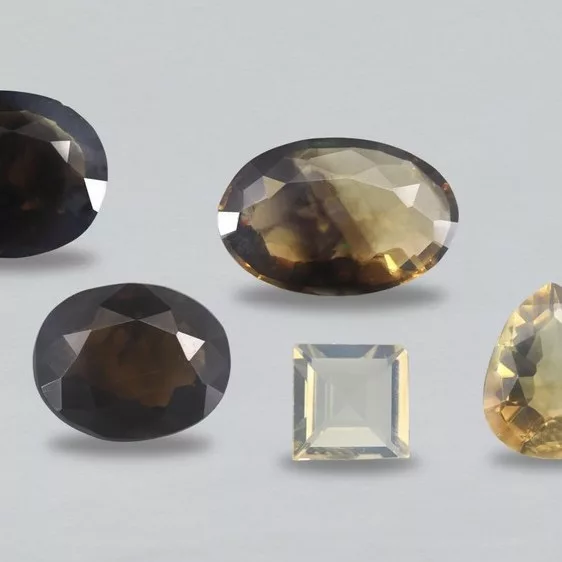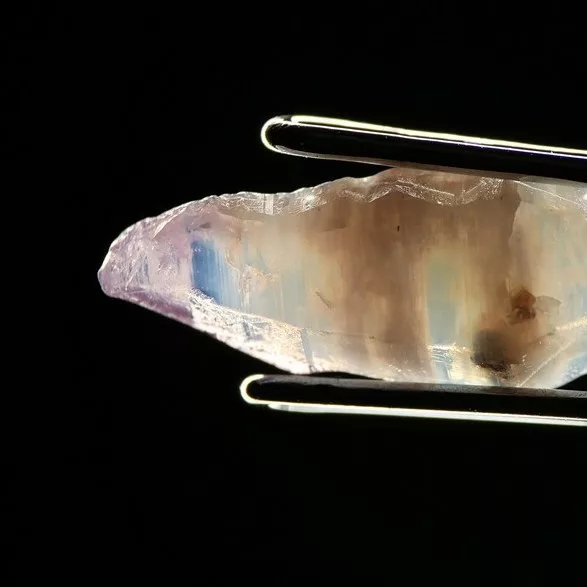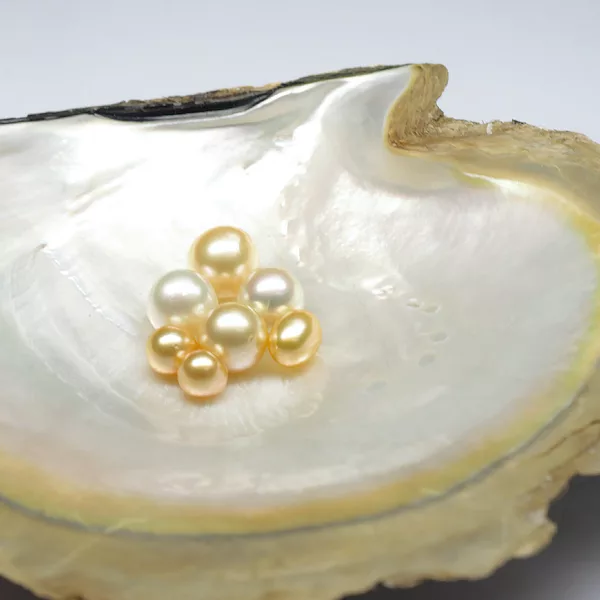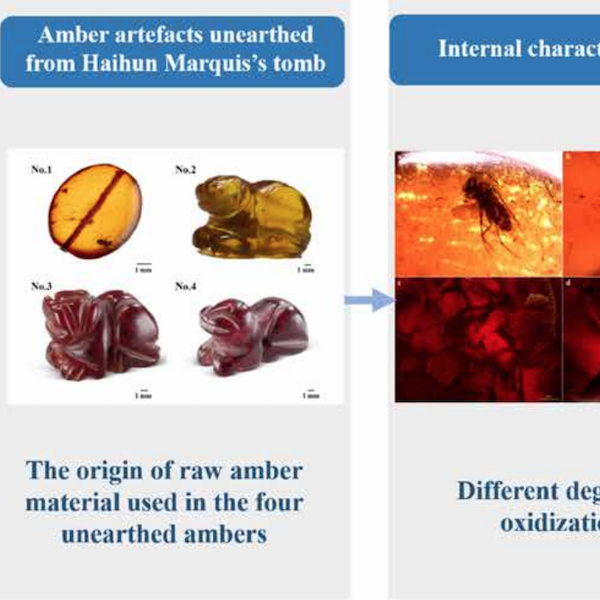New yellow to grey-brown opals from Australia
Introduction
With the mining activity for over 170 years (Hsu et al., 2015), Australia has been a premium source for precious opal in white to black body colours with vibrant ‘play-of-colour’ effect. In early 2023 Mr. Sharad Garg of Sevenstones Gemfields Private Limited, Jaipur, India showed us a few specimens of transparent to translucent specimens of opal ranging in colours from near colourless to greyish brown and brownish grey. According to Mr. Garg these opals are a new discovery in Australia and he himself is involved in mining activities with local miner in Australia. In the author’s experience, such opals were not seen earlier at the laboratory, although, colourless to near-colourless ‘hyalite’ opal do exist in the trade along with crystal opal. However, these new varieties of opals were distinct from the existing hyalite opal. Mr. Garg also informed that these opals are not yet released in the trade and is planning to release only when significant supply is ensured.
According to Mr. Garg, these new opals are recovered from opal fields around Lightning Ridge in New South Wales, Australia (The exact mine location was not revealed); this region is known for producing exceptional qualities of precious black opal (Hsu et al., 2015). He further informed us that the tunnel for mining was originally dug up in search of black opals, however, this new type yellow to grey-brown opals were discovered after cleaning the nodules. Like any other black or crystal opal in this area, these yellow to greyish brown-brownish grey opals are found in seams between sandstone layers.
Results and Discussion
Visual appearance
13 faceted samples were selected from a larger packet for study. They weighed from 0.05 to 5.80 ct. These new opal specimens ranged in colour from near colourless to light yellow to brownish-grey and greyish brown (Figure 1); some samples displayed brown-yellow patchy, banded, or zonal colouration. Grey to brown samples as well as the brown/ grey areas in colour zoned/banded samples appeared translucent while yellow to near colourless areas appeared transparent with good polish quality. Play-of-colour was missing in the majority of samples under standard room lighting, however, brown to grey samples displayed a weak play-ofcolour when illuminated with strong fibre-optic light (Figure 2). Further, this play-of-colour was visible only in small areas and restricted to grey-brown colour zones. Yellow samples displayed very weak opalescence.
These opals may further be related to precious black opal from Lightning Ridge due to their brown-grey zones or areas and subtle play-of-colour. Purer and deeper body colour and stronger play-of-colour could have qualified these opals as precious black opal.
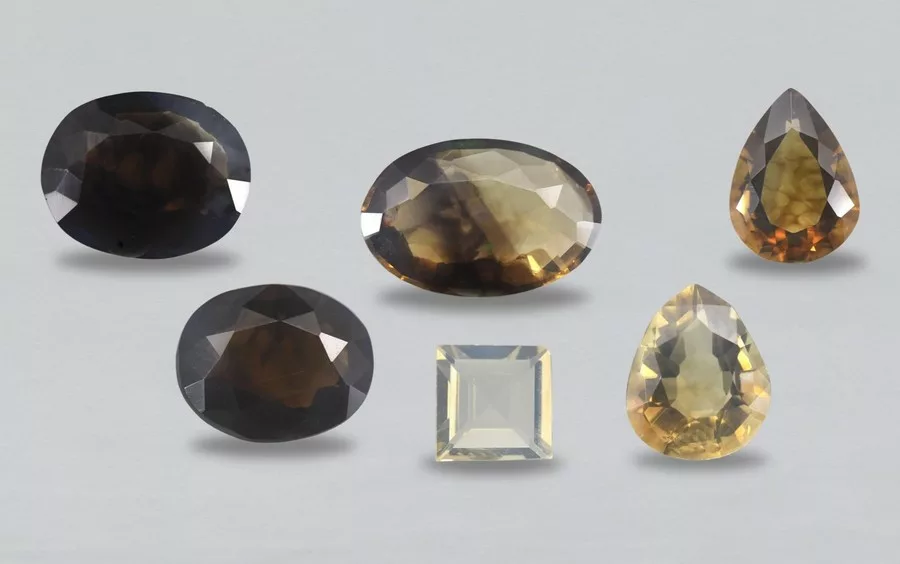
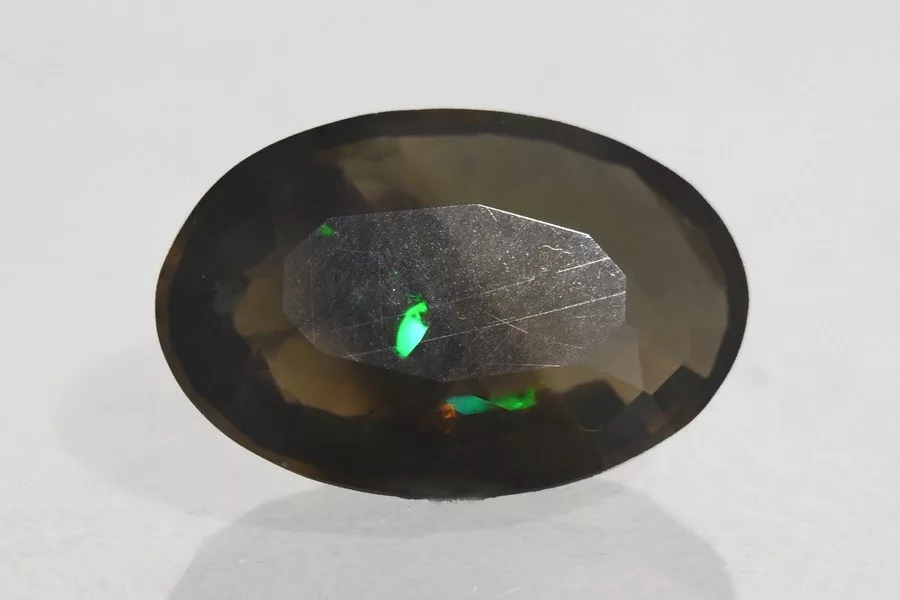
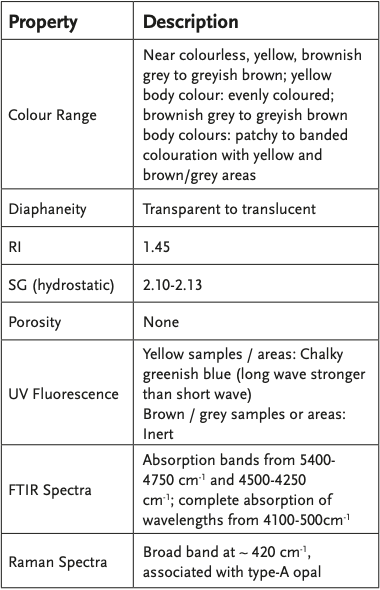
Properties
Gemmological properties of the studied samples of opals are summarized in Table 1. During hydrostatic specific gravity measurements, none of the opal sample displayed signs of porosity, suggesting that these opals are quite stable. Further, during storage of these samples in standard package in a locker safe for approximately three months, no signs of crazing were observed, again suggesting high stability.
Raman spectroscopy using 532 nm excitation, in the range 200-2000 cm-1 displayed a rising signal from 200 to 2000 cm-1, related to fluorescence; in the experience of the author, such Raman spectra are usually seen in type-A opals. Raman spectra collected with 785 nm laser revealed a broad band centred at ~ 410cm-1, which suggested type-A opals (e.g., Rondeau et., 2010).
Microscopic examination
The most important features observed in grey to brown opals was their colour distribution, which appeared to follow a cellular or web-like pattern or flow pattern (Figure 3). Such patterns have been reported earlier in Ethiopian opals (e.g., Johnson et al., 1996; Rondeau et al., 2013). These dark bands or zones of colour appeared cloudy and translucent in fibre optic lighting (Figure 4). Raman spectra of these cloudy areas did not reveal any additional features. Further, these grey-brown zones also displayed subtle play-of-colour effect, which was otherwise missing in transparent yellow areas.
In addition, some scattered dendritic clouds were also present in few samples (Figure 5). Such inclusions are previously seen and reported in many opals including Mexican fire opals (e.g., Gübelin & Koivula, 2005).

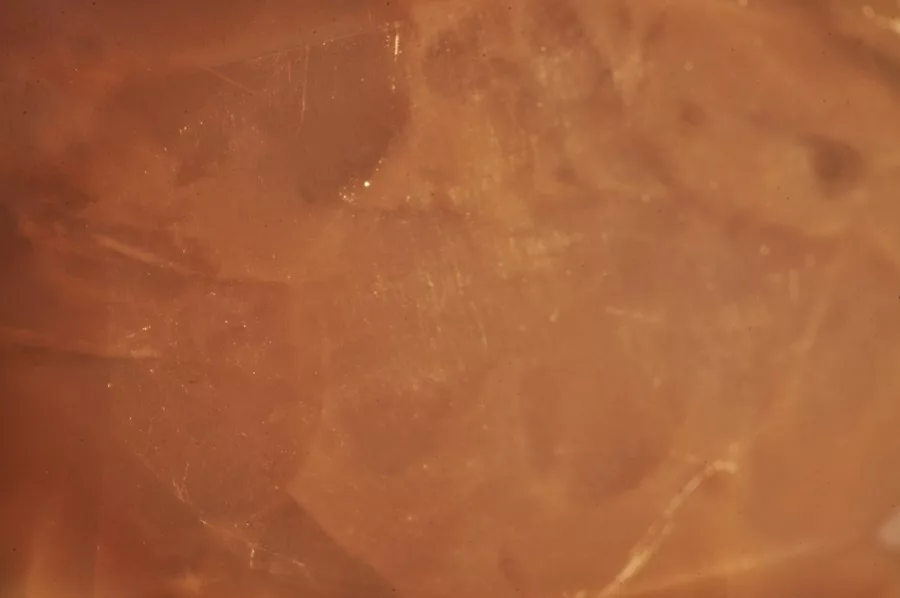
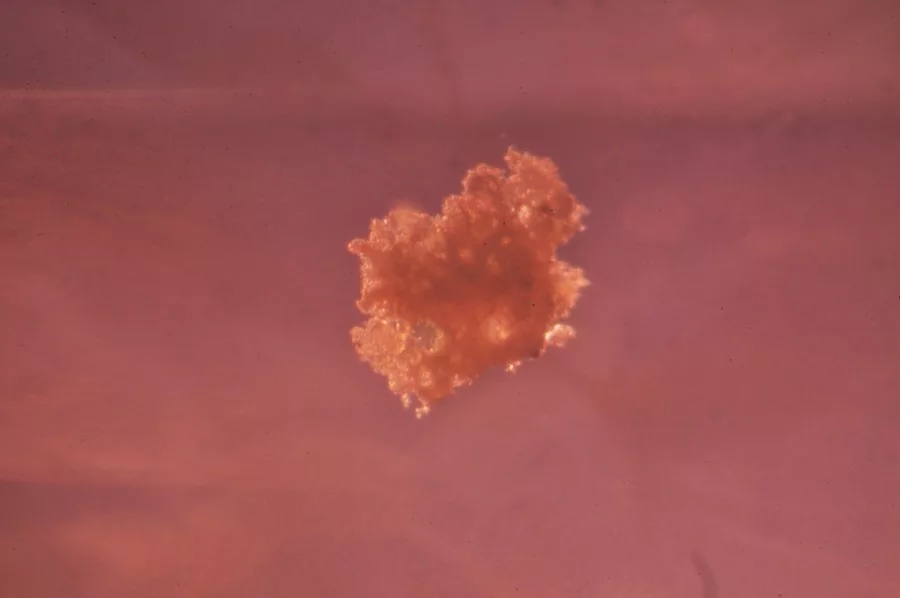
Conclusion
These new type of opals from Lighting Ridge, in the colour range from near colourless to yellow to greyish brown and brownish grey, including the banded varieties are an interesting find due to their unusual colours and patterns. Black opals from Lightning Ridge are coloured by black pigment composed of fine-grained sulfides, Ti-oxides, and assorted minor minerals, and their organic matter, which may represent a mixture of fossilised sulfate reducing bacteria (SRB) and their organic food source (Hermann et al., 2019). Detailed chemical study is in progress to determine this elemental corelation. Black opals from Ethiopia also exist in the trade; Raman spectroscopy of black Ethiopian opals revealed presence of carbon as major colouring agent (Kiefert, et al., 2014), which was absent in these studied opals from Australia. Further, their high durability (no crazing or porosity) makes them an interesting gem for fashion jewellery.
References:
- Gübelin E.J., and Koivula J.I., 2005. Photoatlas of Inclusions in Gemstones, Vol. 2. Opinio Publishers, Basel, Switzerland, 491, 493, 495
- Herrmann J.R., Maas R., Rey P.F. & S. P. Best S.P., 2019. The nature and origin of pigments in black opal from Lightning Ridge, New South Wales, Australia, Australian Journal of Earth Sciences, DOI: 10.1080/08120099.2019.1587643
- Hsu T., Lucas A., and Pardieu V., 2015. Splendor in the Outback: A Visit to Australia’s Opal Fields, Gems & Gemology, 51(4), 418-427
- Johnson M.L., Kammerling R.C., DeGhionno D.G., and Koivula J.I., 1996. Opal From Shewa Province, Ethiopia, Gems & Gemology, 32(2), 112-120
- Kiefert L., Hardy P., Sintayehu T., Abate B., and Woldetinsae G., 2014. Gem News International: New Deposit of Black Opal from Ethiopia, Gems & Gemology, 50(4), 303-305
- Rondeau B., Fritsch E., Mazzero F., Gauthier J-P., CenkiTok B., Bekele E., and Gaillou E., 2010. Play-Of-Color Opal from Wegel Tena, Wollo Province, Ethiopia, Gems & Gemology, 46(2), 90–105
- Rondeau B., Gauthier J-P., Mazzero F., Fritsch E., Bodeur Y., and Chauviré B., 2013. On the Origin of Digit Patterns in Gem Opal, Gems & Gemology, 49(3), 138-46
Acknowledgement
Mr. Sharad Garg of Sevenstones Gemfields Private Limited, Jaipur, India for providing information on new deposit and sharing samples for study.

